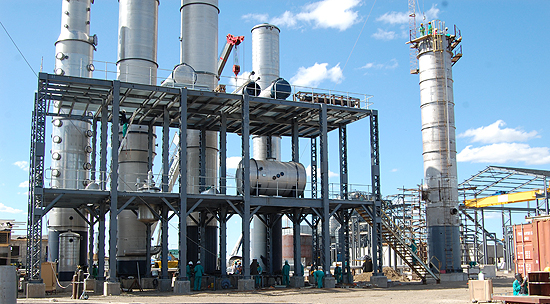Zim infrastructure projects among Africa’s top 100

Business Reporter
FIVE of Zimbabwe’s infrastructure development projects made it into the 2013 top 100 mega projects in Africa, according to a list published by Africa Investor Magazine.
The top 100 mega projects list has been published annually since 2010 to give project management stakeholders indicators of where infrastructure investments funds are flowing on the African continent.
Power generation, mining and transport infrastructure projects dominate the list.
According to AI, mega projects are classified as those with a budget of more than US$1 million, take more than five years to implement, affect the lives of more than a million people, and have a wider macro-economic impact that is totally transformational.
They commonly involve large-scale construction schemes whose products give significant credit to Africa’s yawning infrastructure deficit.
The five projects from Zimbabwe included on the list include the now completed US$600 million Chisumbanje ethanol project and the ongoing US$300 million Zimbabwe National Roads Administration’s rehabilitation of the Plumtree-Bulawayo-Harare-Mutare road.
Also making the list is the Zimbabwe Power Company’s US$350 million Kariba South hydropower expansion project, the US$2 billion Zesa and Chinese Energy Company power project in Matabeleland North and lastly the rehabilitation of the Beitbridge-Harare-Chirundu road project still at planning stage and estimated to cost over US$1 billion.
The road infrastructure projects are expected to improve the country’s roads which had become deplorable, much to the chagrin of motorists who accused the responsible authorities of prioritising toll fees collection while doing nothing to rehabilitate them. The power generation projects are also expected to significantly narrow the gap between supply and demand. The power authority is at present only able to generate 1 320 megawatts from a demand of 2 200MW, which is more than the installed capacity of 1 900MW.
The country has already begun to reap the benefits of Green Fuel’s ethanol project with uptake increasing to more than 2,2 million litres in September this year spurred by the introduction of E5 mandatory blending. Besides contributing significantly to the country’s infrastructure and power generation, the projects have a tremendous impact on job creation.
The ethanol plant employs about 4 000 workers and projections are that about 8 000 people would get jobs at the plant by the first quarter of next year.
Project Management Institute of Zimbabwe secretary-general Mr Peter Banda said the development of these mega projects offered the prospect of unlocking the continent’s still largely dormant mineral wealth.
“The Sadc region and East Africa account for the larger share of mega projects, suggesting sub-Saharan Africa as carrying the most preferential destinations for investors on the continent. The International Finance Corporation is seeking to invest at least US$4,3 billion in sub-Saharan Africa by the end of 2013 only with focus on energy and transportation projects,” said Mr Banda.











Comments